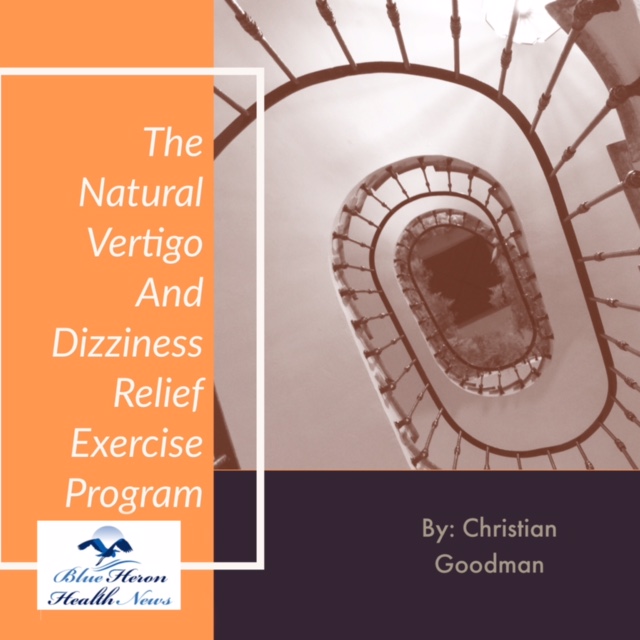
The Vertigo And Dizziness Program™ By Christian Goodman Vertigo and Dizziness Program is a designed to help stop vertigo and dizziness once and for all. Medical practitioner don’t know the exact cure for this condition but this program will show you exactly what you need to make this painful condition a thing of the past. This program has recommended a set of simple head exercises that help cure this condition.
Common myths about vertigo
Vertigo is often misunderstood, and several myths about it can contribute to confusion or mismanagement of the condition. Here are some of the most common myths about vertigo and the facts that dispel them:
1. Myth: Vertigo is the Same as Dizziness
- Fact: While vertigo is a type of dizziness, it specifically refers to the sensation of spinning or a feeling that you or your surroundings are moving, even when you’re still. Dizziness is a broader term that can describe various sensations, including lightheadedness, unsteadiness, or nausea, which are not always linked to vertigo.
2. Myth: Vertigo Only Happens When You Stand Up Quickly
- Fact: Although standing up too quickly can cause dizziness or lightheadedness (orthostatic hypotension), vertigo is often caused by issues in the inner ear or the vestibular system, like benign paroxysmal positional vertigo (BPPV), Meniere’s disease, or vestibular neuritis. It can occur regardless of body position.
3. Myth: Vertigo is Just an Inner Ear Problem
- Fact: While many cases of vertigo are linked to the inner ear, such as BPPV or Meniere’s disease, vertigo can also be caused by problems in the brain, such as a stroke, multiple sclerosis, or vestibular migraines. A thorough evaluation is essential to determine the underlying cause.
4. Myth: Vertigo is Always a Sign of a Serious Health Condition
- Fact: While vertigo can sometimes indicate a serious condition (like a stroke or a brain tumor), it is often caused by more benign and treatable conditions, like BPPV or an inner ear infection. A healthcare professional can help differentiate between benign and more serious causes.
5. Myth: Medication is the Only Treatment for Vertigo
- Fact: Medication can help manage symptoms of vertigo, but in many cases, treatments like physical therapy (specifically vestibular rehabilitation therapy), maneuvers to reposition the ear’s crystals (like the Epley maneuver for BPPV), and lifestyle changes (such as avoiding triggers) are effective as well. It’s often a combination of treatments, not just medication.
6. Myth: Vertigo Can Be Cured Immediately
- Fact: Treatment for vertigo can vary depending on its cause, and some forms of vertigo may require ongoing management. While certain conditions like BPPV may be resolved through specific maneuvers, others, such as Meniere’s disease or vestibular migraines, may require long-term lifestyle adjustments and symptom management.
7. Myth: Vertigo Only Affects Older Adults
- Fact: While vertigo is more common in older adults, people of all ages can experience it. Conditions like BPPV, vestibular migraines, or even ear infections can affect younger people, and vertigo is not limited to age.
8. Myth: Vertigo Means You Should Avoid All Physical Activity
- Fact: While vertigo can make physical activity challenging, it’s important to engage in the right types of exercises. Vestibular rehabilitation therapy (VRT) involves specific exercises designed to help people with vertigo regain balance and reduce symptoms. Inactivity can worsen balance issues over time.
9. Myth: Vertigo Always Comes with Nausea and Vomiting
- Fact: While nausea and vomiting can be common symptoms of vertigo, not everyone experiences them. Some people may only feel a sense of imbalance or spinning without any digestive distress. Vertigo can present differently depending on its cause.
10. Myth: Vertigo Is Just a Temporary Issue and Doesn’t Need Treatment
- Fact: While some forms of vertigo resolve on their own (such as those caused by minor ear infections), chronic or recurrent vertigo should be evaluated and treated. Untreated vertigo can lead to a decreased quality of life, increased risk of falls, and the potential for long-term balance issues.
11. Myth: Vertigo Can Be Easily Self-Diagnosed
- Fact: It’s crucial to get a professional diagnosis for vertigo. Although some symptoms may seem obvious, there are multiple causes for vertigo, and the right diagnosis is essential for effective treatment. A healthcare provider may use tests, imaging, and a physical exam to determine the cause of vertigo.
Key Takeaway
While vertigo is often misunderstood, understanding the facts about it can help manage the condition better and seek the appropriate treatment. If you experience vertigo, it’s important to consult a healthcare provider to determine the cause and explore effective treatment options.

The Vertigo And Dizziness Program™ By Christian Goodman Vertigo and Dizziness Program is a designed to help stop vertigo and dizziness once and for all. Medical practitioner don’t know the exact cure for this condition but this program will show you exactly what you need to make this painful condition a thing of the past. This program has recommended a set of simple head exercises that help cure this condition.